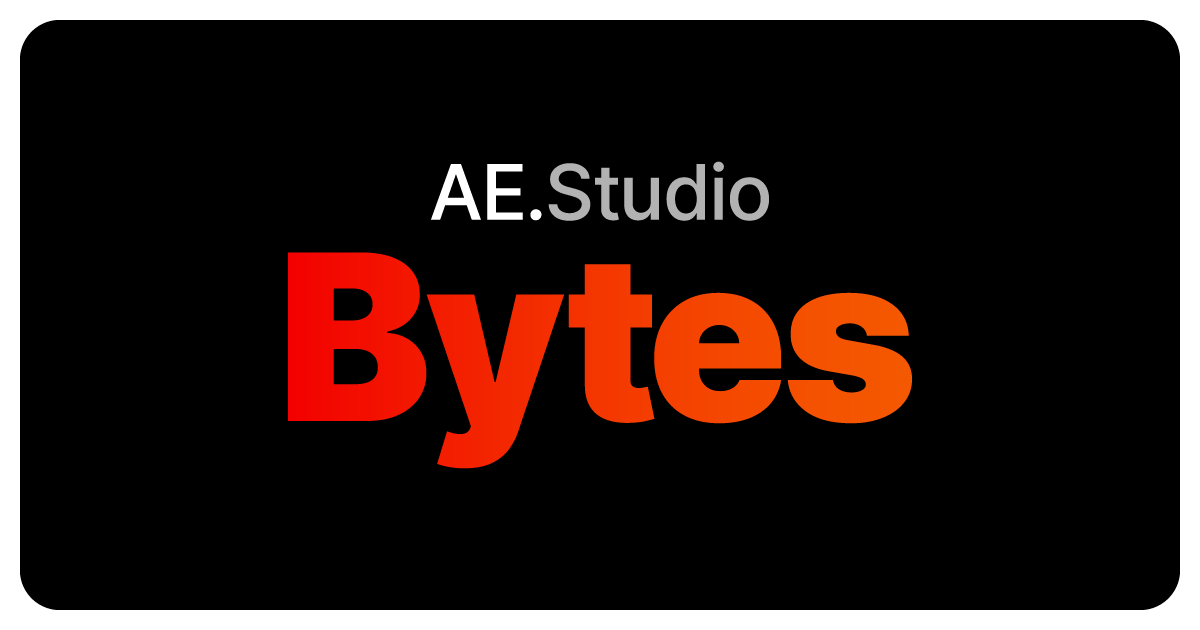- AE Studio Bytes
- Posts
- Our 8-step custom software playbook, revealed
Our 8-step custom software playbook, revealed
Why most custom software projects fail (and what to do to ensure yours succeeds)


You know that brilliant AI idea that could transform your business?
Most of these ideas end up in the “AI money pit”: overbuilt, overpriced, and never actually adopted.
According to a new MIT report analyzing 300 public AI deployments, 95% of generative AI pilots fail to deliver meaningful financial impact!
But it doesn’t have to be this way.
MIT also discovered that the problem isn’t the AI technology itself.
It’s the implementation process.
After helping dozens of companies navigate from idea to production-ready solution, we've developed an 8-step playbook that actually works.
The 8-Step Custom Software Playbook
Step 1: Define Business Outcomes (Not Features)
Don't say “build a chatbot.”
Instead, say “reduce support costs by 40%.”
Frame everything around increasing revenue or decreasing costs, because when you eventually pitch this to your CFO, that's what they care about: tangible business impact, not shiny features.
Step 2: Map Current Processes
Before you can fix something, you need to understand how it's broken.
Take a hard look at what tasks are eating up your team’s time and where customers are getting frustrated.
Sometimes you’ll discover you don't need to build anything new.
You just need to optimize what already exists.
Step 3: Build a Clickable Prototype
Use AI tools like Replit or Claude to create a working demo that shows exactly how your solution would work.
This gets you internal buy-in from stakeholders who can see the value immediately, rather than trying to interpret a 20-page requirements document.
People are visual creatures – use that to your advantage!
Step 4: Choose the Right Partner
Look for development teams that ask about your business goals first, not just technical specifications.
The right partner will make thousands of micro-decisions throughout development.
And if they truly understand your desired outcomes, those decisions will naturally align with your goals instead of working against them.
Step 5: Create an Outcome-Driven Roadmap
Instead of thinking “build login system → add dashboard → integrate APIs”…
Frame it as “enable users to access their data → provide actionable insights → automate key workflows.”
Set regular milestones and obsessively track three things:
Timeline progress
Budget burn rate
Actual value delivery
Step 6: Build in Constant Feedback
If your development team is working off assumptions instead of real user feedback, they’re setting you up for failure.
Establish clear communication structures where developers share what they've built and why, while you provide priority updates and scope adjustments based on what you're learning.
Step 7: Release as a Pilot
Launch something that works well enough to deliver value and gather real feedback, but don’t wait for perfection!
Find willing beta testers who’ll push your solution to its limits and provide honest insights about what’s working and what needs improvement.
Step 8: Plan for Continuous Improvement
Treat your software as a living product, not a project with a clear endpoint.
Budget for ongoing maintenance, proper documentation, and regular improvements, because your business will evolve over time…
And your software needs to evolve with it.
Three Key Takeaways
Invest in clarity, not complexity.
If you can’t explain what you’re building to your board and customers, nothing will change.
Culture drives adoption.
Behavior change follows recognition, so celebrate wins loudly and often.
Start with outcomes.
When you build for results instead of features, you get results.
Building custom software doesn't have to be a gamble.
Follow this proven process, and you'll dramatically increase your chances of success.
Ready to turn your idea into reality?
If you're considering a custom software or AI project and want to discuss your specific situation, book a quick consultation call with our team here.
We’ll help you define clear outcomes, identify roadblocks, and determine if your idea is ready for development.
Until next time 👋
— The AE Studio Team
P.S. For more info about AE Studio and the work we do, check us out here.
